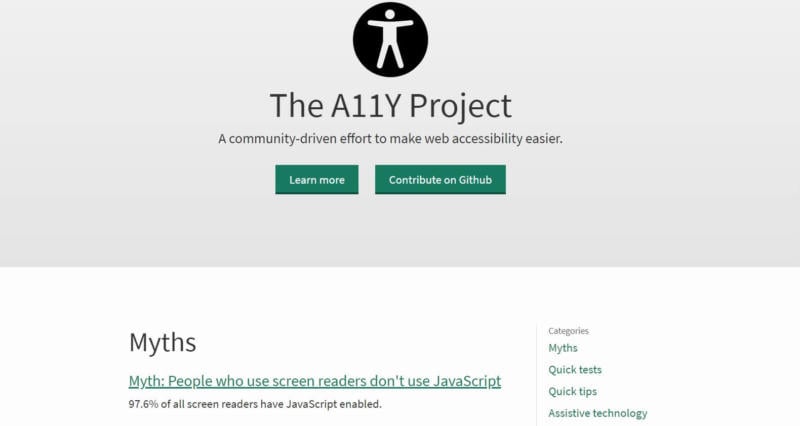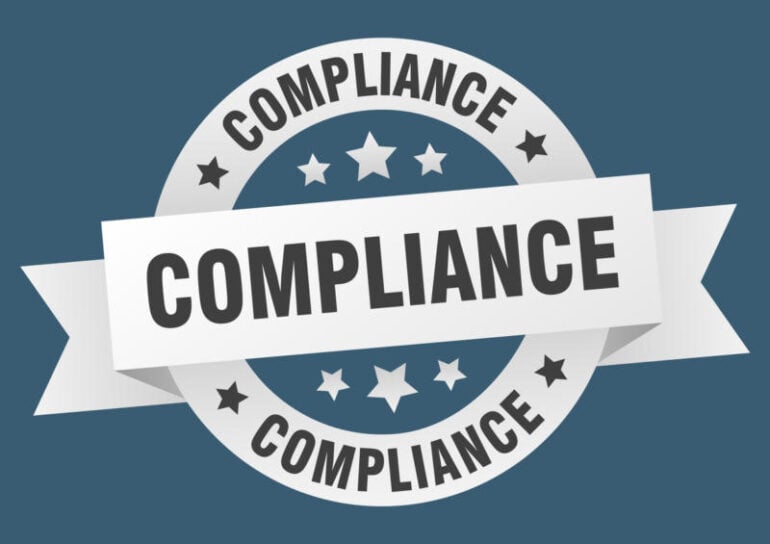- Apr 13, 2020
 0
0- by A2 Marketing Team
When it comes to web design, there are many valuable elements that you can add to clients’ websites. However, one of the most important is compliance with the Americans with Disabilities Act (ADA). When a website fails to be compliant, it opens itself to potentially damaging lawsuits, and which could end with a loss in traffic, revenue, or even business for you.
If you’re a digital agency, you’ll recognize the importance of delivering a quality product. This is why it’s vital for you to keep in mind accessibility, and consider bringing in other companies to help you. Doing so can protect your clients and ensure their online visitors are not excluded from any website.
In this article, we’ll first go over what ADA compliance means for you. Then we’ll offer some practical tips to implement accessible features. Let’s get started!
The Benefits of Being Web Accessible
While maintaining accessible standards is important itself, there are clear benefits to adding accessible features to the websites you design. For instance, doing so can enhance User Experience (UX), and simultaneously deliver a website that meets everyone’s needs.
After all, there are countless disabilities and impairments affecting average folk, both temporary and permanent. If a website can’t accommodate them, it effectively excludes a potential large swathe from using it.

In fact, the benefits of accessibility can have knock-on effects in terms of:
- Helping to make a website inclusive and non-discriminatory.
- Broadening a site’s audience.
- Facilitating ADA and Web Content Accessibility Guidelines (WCAG) 2.1 compliance.
- Improving overall UX for everyone.
Fortunately, organizations such as A11y (a numeronym for Accessibility) exist to make navigating accessibility easier. They recognize it’s a difficult concept to master absolutely, and are there to help guide site designers on how to make improvements.
As such, there’s a convenient checklist available for all to use. This way, you can ensure you’re up-to-date on the most recent accessible standards.
An Introduction to ADA Compliance
The ADA amounts to a strict set of liability laws to protect the rights of disabled citizens. This includes websites under Title III regulations, but we’ll get more into this later.
As such, regardless of whether a website is government- or privately-owned, it can be held liable if it does not meet certain accessibility standards. The ADA doesn’t have its own technical list of requirements, so this is often left to the WCAG 2.1, published by the Web Accessibility Initiative (WAI).
In brief, there are three levels of support for accessibility, according to the a11y project:
- A: This is considered ‘essential support,’ and does the bare minimum to help operate assistive technology or add accessible features.
- AA: This is called ‘ideal support,’ and is what is required in the European Union (EU).
- AAA: This ‘high-level support’ is usually only found for websites specifically dealing with an audience that needs accessible features.
The lists created by the a11y project and WCAG don’t guarantee that your client’s website will be completely accessible, and therefore safe from a lawsuit. However, they are likely your best bet to assure a site is usable by all.
Why You Won’t Find Compliance Guidelines From the ADA
As mentioned, the ADA itself doesn’t explicitly state a position on web accessibility, nor deliver any clear standards, unlike the WCAG 2.1. This may seem strange, but there is a simple reason behind it.
Unfortunately, the ADA predates the advent of accessibility concerns on the Internet. In fact, the USA established the ADA in 1990, well before most people were surfing the web.
Nonetheless, the US Department of Justice has sought to clarify the situation given the amount of confusion related to the ADA. Namely, it has stated this does extend to the internet – even without there being explicit technical standards.
In essence, while there are no strict legal requirements, websites should still be accessible. This leaves a large amount open to individual interpretation.
For developers and agencies, this means it’s becoming increasingly important to be ADA compliant. However, there is good news. Some judges presiding over these lawsuits have stated that adherence to WCAG is an acceptable standard of accessibility.
So, even though the ADA does not currently uphold WCAG as a standard by law, it’s a valuable guide. Alone, the potential for a lawsuit creates enormous exposure for web designers, and their respective agencies.
Over time, this can have negative consequences for your digital agency in terms of the reputation you want to cultivate, and your ability to attract clientele. After all, losing money over avoidable lawsuits is bad for all, and you’ll likely not want to lose potential clients in the future over a bad reputation for ignoring ADA compliance.
How You Can Add ADA Compliance to Your Websites
Fortunately, having checklists can gauge your current level of accessibility, then lead you to how your agency can make improvements. For example, you could start by giving visitors alternative options:
- Using alt text for images to make them accessible to screen readers.
- Offering text transcripts for video and audio content.
- Providing captions for video content.
Of course, there are more considerations you might want to factor in, such as the appearance of the websites your company designs:
- Sizing text to 16 pixels to improve readability.
- Choosing clear and legible fonts.
- Using a color-contrast ratio of 4.5:1 between text and backgrounds for clarity
- Adding descriptive anchor text for internal and external links, such as “click here to contact us” in lieu of just “contact us.”
Accessibility also means user control. To add such features, you could introduce the following:
Adding skip link functionality to help ‘skip’ to content further down the page.
Enabling navigation by keyboard only.
Letting users pick a language.
Of course, this is not an exhaustive list. Ultimately, the scale of accessibility requirements for so many websites may necessitate onboarding a third-party solution. Doing so not only can provide you with further guidance, but it can streamline your accessibility improvements.
If this is the case, consider accessiBe. It’s an AI-powered, accessibility-focused platform designed to overhaul websites and make them ADA compliant.
To put it simply, the software goes through a page, analyzes it, and makes adjustments to ensure compliance with WCAG 2.1. This happens within just 48 hours, including both finding potential problems and correcting them.
Completing these changes manually could literally take you weeks, all while you’re open to potential lawsuits. Within this context, hiring outside help can be a fast, effective, and quality-driven method to get your website ADA compliant. After all, your clients entrust you to deliver.
Conclusion
Ultimately, ADA compliance can benefit everyone. Yes, accessibility features can make the sites you design more usable by visitors with disabilities. However, it can also be a boon for older internet users, and provide welcome quality-of-life improvements to your client’s web sites.
While there is much more that goes into accessible web design, you can give your design agency a solid start by ticking off checklists and considering third-party solutions like accessiBe.
Image credit: Pixabay.












